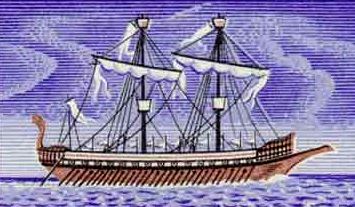
Raid on Alexandria |
year: 1032 |
| A successful raid of a Byzantine fleet against Alexandria in Egypt | ★ ★ ★ ★ ★ |
|
enemy: Arabs
|
location: Alexandria, Egypt
|
accuracy:
●●●●●
|
|
battle type: City Capture |
war: Later Byzantine-Muslim Wars |
modern country:
Egypt |
| ▼ The Byzantines(emperor: Romanos III Argyros) | ▼ The Enemies | |
| Commander: | Admiral Tekneas | |
| Forces: | ||
| Losses: |
| Background story: |
| After 1030, the Saracen raids on the Greek coast intensified. In 1031, the governor of the Peloponnese, the patrician Nikephoros Karantinos, managed to destroy an Arab fleet that had plundered the coasts of the Peloponnese and the Ionian Sea, reaching as far as Corfu, which had been set on fire. The Saracens returned with a larger fleet both in 1032 and again in 1033, but the outcome was the same, with Karantinos destroying the Saracens’ fleet and capturing many prisoners. These were large scale operations, as Skylitzis states that in 1032, 1000 ships participated. It was a period of intense activity at sea. Sometimes the Byzantines had taken the initiative as it happened with the raid on Alexandria. |
The Battle: |
 Byzantine Chelandion, 10th/11th cent. Apparently, he did not attack exactly the city of Alexandria but the port, the northern coast of Egypt and, further to the east, the Nile delta. He sank many Arab ships and captured many. It is very likely that the operation was planned taking into account that a large part of the Arab fleet would be missing in one of the regular summer attacks on the Greek coast, perhaps in one of the attacks that Karantinos was victorious, as mentioned above. The operation was a complete success and Tekneas returned victorious, capturing many ships and looting. |
Aftermath: |
| It was a successful and spectacular operation that humiliated the belligerent Saracens, but it was not followed up and did not change the balance of power in the eastern Mediterranean. However, it may have discouraged, for a while, the Saracens to attack every summer the Byzantine coasts. |
|
|
